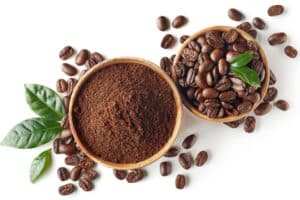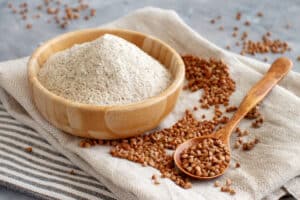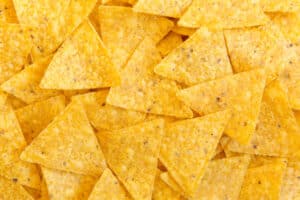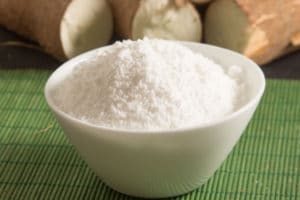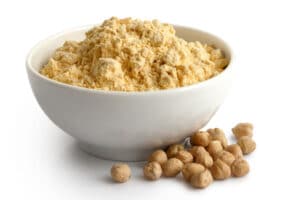We all know the feeling of being mid-way through a recipe and realizing that you don’t have an ingredient. If that ingredient happens to be corn flour, here’s a silver lining—there are many corn flour alternatives and substitutes to choose from.
You can use Cornstarch, Potato Flour or Rice Flour as Corn Flour substitute because they have the same closeness in taste and texture. Other alternatives are Masa Harina and Wheat Flour.
What is Corn Flour?
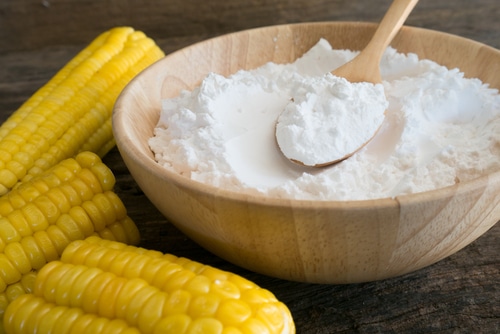
Corn flour is a more refined version of cornmeal made from dried corn kernels. Manufacturers mill the entire corn kernel, including the hull, germ, and endosperm.
Once broken down, corn flour retains the hue of the corn that they ground it from (yellow, white, or blue). It’s a whole-grain type of flour and, as a result, has a similar consistency as whole wheat flour.
Although similar, Cornmeal and cornflour have their differences. We expanded more on this in our cornmeal vs corn flour comparison article.
Recommended Corn Flour Substitutes
1. Cornstarch
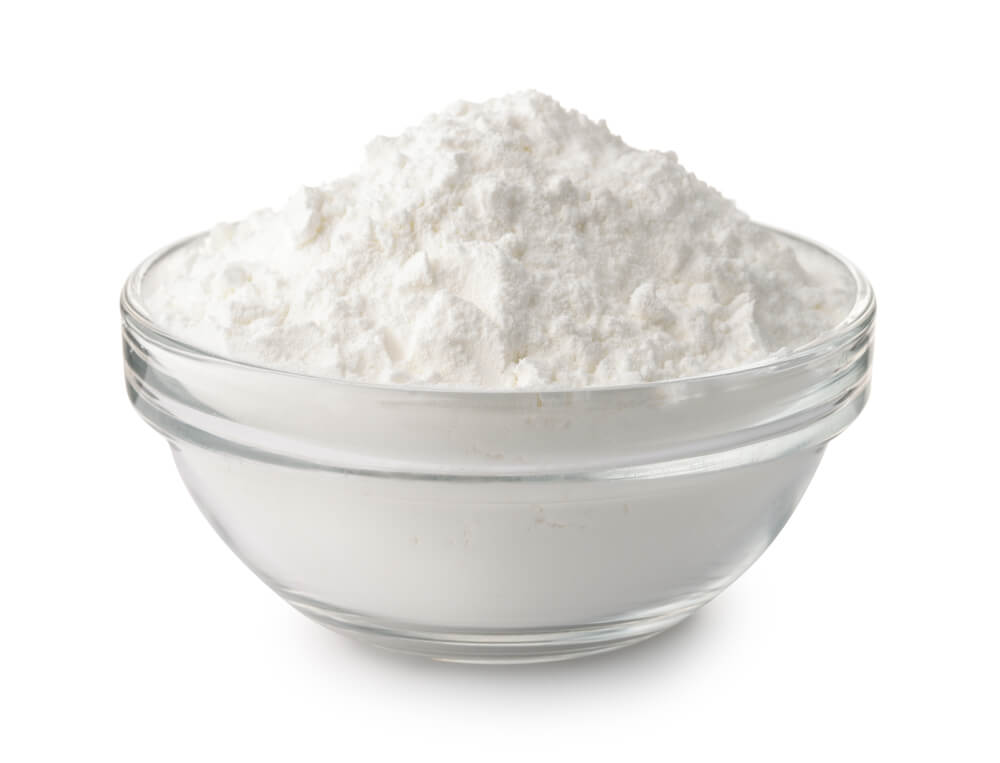
It seems fitting that an excellent corn flour alternative would contain the same ingredient—corn.
It’s easy to use cornstarch as a substitute for corn flour because you can use it in a 1:1 ratio.
However, unlike corn flour, it’s crucial to mix cornstarch in water first. That way, it’ll prevent clumping and ensure that it spreads evenly throughout the dish you’re making.
Although they both originate from corn, under normal circumstances, corn flour and cornstarch have different uses. Cornstarch is an even more delicate powder product since manufacturers only grind the starchy part of the corn kernel.
For that reason, people typically use cornstarch to thicken their recipes. Unlike corn flour, cornstarch contains gluten which prevents baked goods from crumbling. Cornstarch has such glue-like properties that you can even use it as an egg substitute.
Therefore, you might be pleasantly surprised to find that your recipe turned out better by using cornstarch. However, anyone requiring a gluten-free diet won’t be able to use cornstarch as a replacement.
Keep in Mind: Cornstarch doesn’t have the pleasant corn flavor that corn flour does. Therefore, you may need to add spices to improve your dish’s taste.
2. Potato Flour
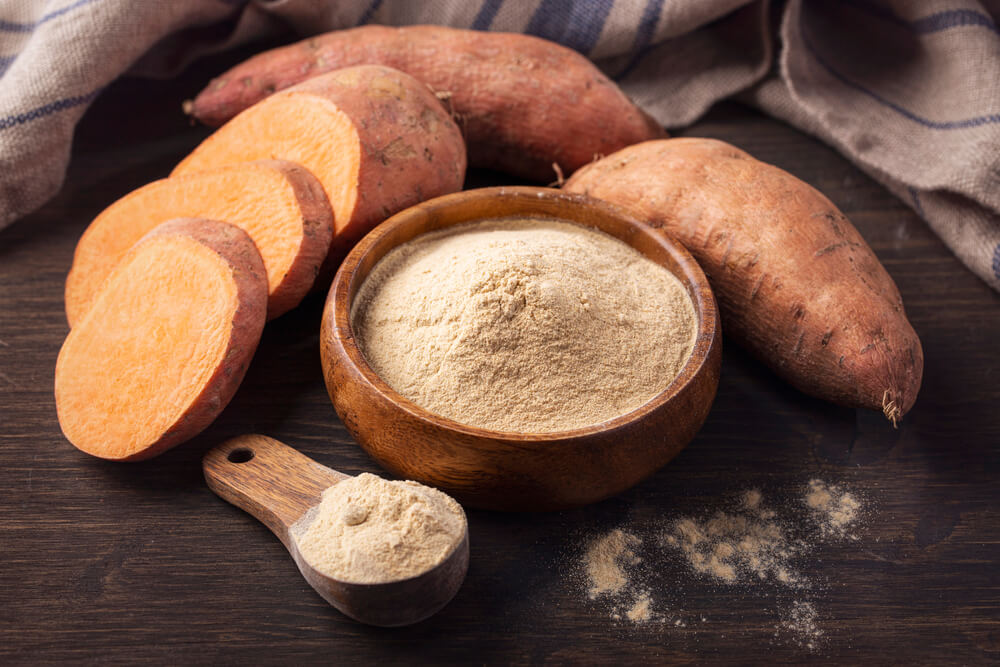
If you have a gluten-free diet, potato flour is one of the best options as a corn flour substitute since it isn’t whole-grain. Therefore, it doesn’t contain gluten.
Furthermore, manufacturers process potato flour similarly to corn flour since they ground the entire potato into flour. They do this by cooking and drying whole potatoes. They then ground the dried potatoes into a fine flour.
By using potato flour as a replacement for corn flour, you’ll receive some nutritional benefits; potato flour contains fiber and protein. Nevertheless, it also has a high concentration of carbohydrates and some fat, so it adds more calories than some of the other substitutes we cover here.
When using potato flour as a corn flour substitute, you should know that your dish may take on a mild potato flavor.
You can use a 1:1 ratio when substituting your recipe with potato flour. Nevertheless, if you intend to use the flour to thicken up liquid dishes like soup, you should add it towards the end of the recipe.
Otherwise, the flour might soak up too much water and make your meal too thick.
Can’t find Potato flour? See recommended potato flour substitutes. Also see how potato starch compares vs potato flour.
3. Rice Flour
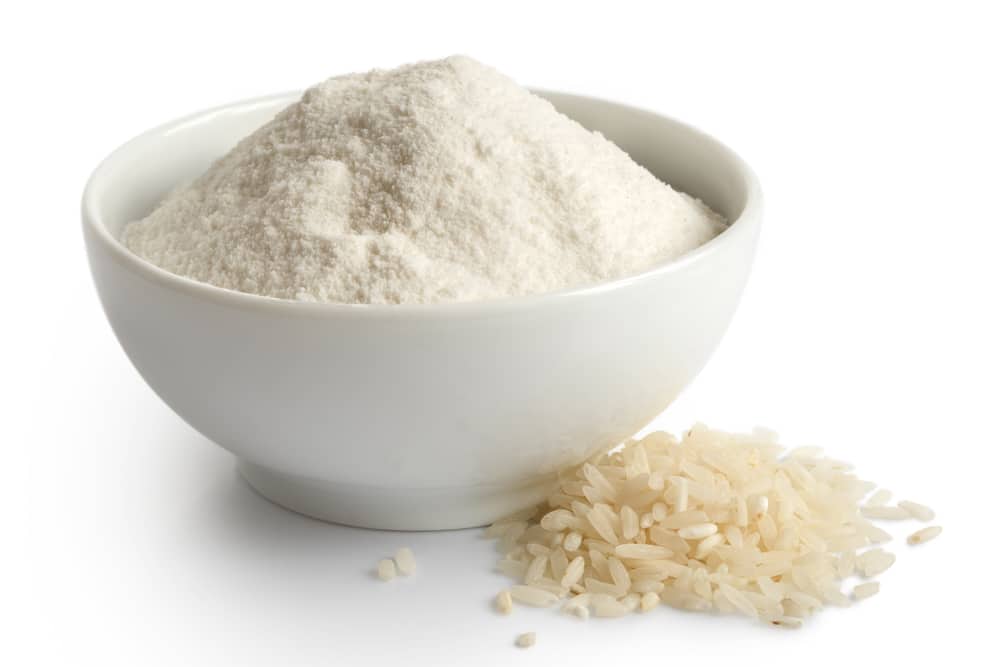
Rice flour is just how it sounds—rice that’s ground down into flour. You can purchase rice flour made from either white or brown rice. In both cases, manufacturers remove the husk before turning the rice into flour.
Rice flour can replace cornflour in baked goods, soup, and other items that need thickening.
Otherwise, if you want to use it to coat food before deep frying, you’ll likely find that the finely ground nature of rice flour doesn’t give your food the same crunch as corn flour.
As with potato flour, rice flour is gluten-free. However, unlike potato flour, rice flour performs best when you mix it in hot or cold water before adding it to your dish.
If you’re into organic food or agriculture, you may have heard how rice absorbs arsenic in the soil easier than other crops. Nevertheless, the Food and Drug Administration states that rice remains a good food for a well-balanced diet since arsenic concentrations in rice are so small.
When using rice flour as an option , you’ll need to use double the amount of rice flour. Therefore, if your recipe calls for one teaspoon of corn flour, you’ll need to use two teaspoons of rice flour.
There’s one area where rice flour excels over corn flour, and that’s in its color. It’s common for corn flour to give your dish a yellow or blue hue depending on the corn used. However, since rice flour is white, it won’t tint your food.
Learn more about rice flour by reading our best rice flour substitute article.
4. Masa Harina
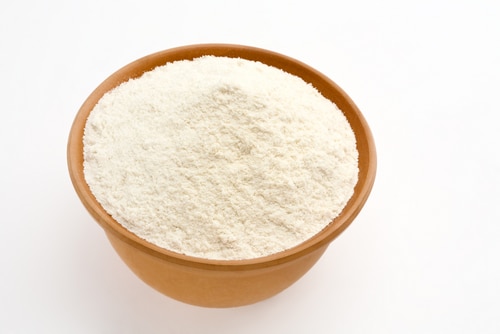
Masa harina is Mexican flour made from corn. It differs from other corn by-products because they dry the corn kernels before soaking them in lime and water. They then wash the soaked kernels and grind them into a thick dough.
Once the dough dries, manufacturers grind it up, producing a product called masa harina that’s a staple ingredient in Mexican foods like tamales and tortillas.
Masa harina is an excellent substitute for corn flour if you plan on making bread or another baked good. It’s a denser flour, so you may not need to use as much of it in your recipe.
When using masa harina in your recipes that call for corn flour, be aware that it could alter the flavor of your dish. Because of the treatment masa harina goes through, the lime gives this flour a slightly tangy taste.
People also comment that masa harina has a unique flavor combination of nuts and corn with a dash of a mineral-like flavor.
Can’t find masa harina? See recommended masa harina substitutes.
5. Wheat Flour
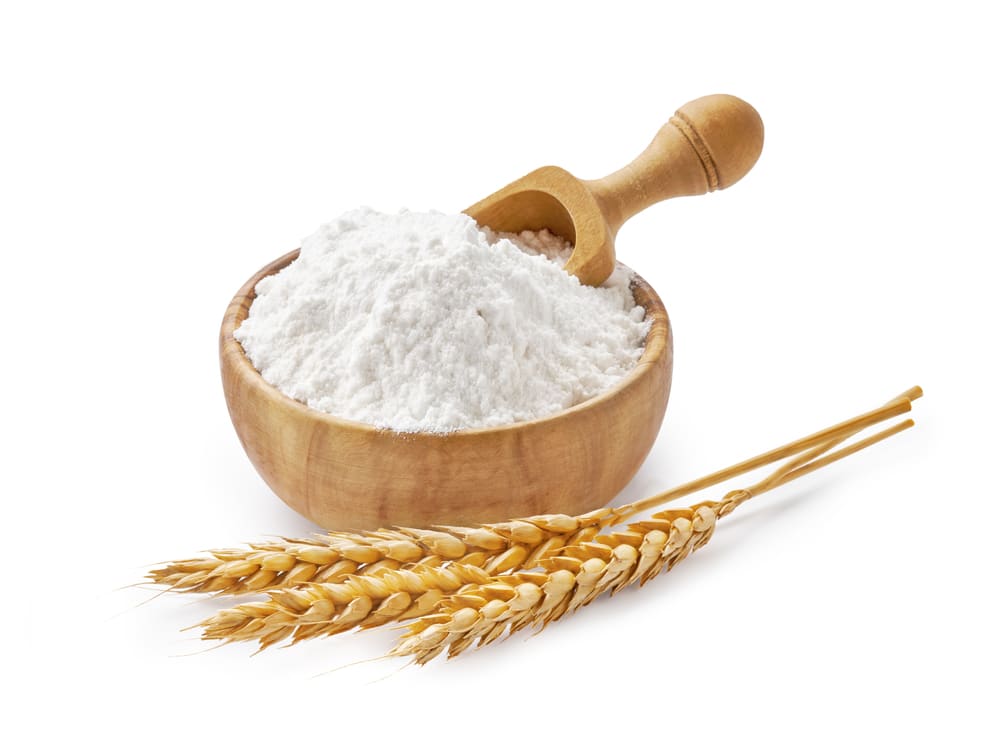
When in doubt, wheat flour is an excellent corn flour alternative for any recipe involving dough.
As a whole-grain flour, wheat flour contains gluten. Manufacturers process wheat four by removing the wheat’s shell and grinding it down into a powder.
Perhaps unsurprisingly, wheat flour is a high carbohydrate food. However, a 3.5-ounce serving contains an impressive 13.2 grams of protein and over 10 grams of fiber. Needless to say, it’s an excellent option for adding some nutritional value to your meal.
You’ll need to add double the amount of wheat flour as the corn flour the recipe calls for if you’re making soup or stew. Furthermore, it’s best to mix it in cold water before pouring it in with the other ingredients to avoid lumps.
If you plan on using wheat flour as a substitute for corn flour in recipes containing dough, a 1:1 ratio is typically a good balance.
FAQs About Corn Flour Alternatives
Do you still have questions about corn flour substitutes? If so, read on for answers to the common inquiries we receive.
Cornstarch is one of the most popular alternatives for corn flour since it comes from the same ingredient. You can also use it in a one-to-one ratio.
If you need to replace corn flour in a baking recipe, rice and wheat flour are great options. You can also use potato flour or masa harina if you have them in your cupboards.
Manufacturers make corn flour and regular flour similarly, but the products themselves have differences.
For example, corn flour has a slight corn taste, whereas other flours taste like the grain they originated from or have a neutral flavor. They also serve different functions when cooking, although you can often use them to replace each other if you’re in a bind.
Corn flour is a versatile ingredient. You can use it in dishes such as:
1. Corn flour bread
2. Biscuits
3. Tamales
4. Soups
5. Stews
The difference between corn flour and cornmeal comes down to the grinding process. Cornmeal is a coarser product that undergoes less time in the mill. Cornbread is a typical food people make with cornmeal since it has a prized grittier texture.
On the other hand, corn flour is a fine powder with a consistency similar to wheat-based flour.
Because manufacturers use the whole corn kernel to make corn flour, it contains several vitamins and minerals. Examples include iron, potassium, thiamine, and vitamin B6.
Corn flour is also a good source of fiber, and it has low sugar content. Nevertheless, you should eat it in moderation since it’s high in carbohydrates.
Conclusion
Corn flour has its purpose in recipes, but luckily, several alternatives behave like it if you don’t have any on hand. Regardless of the corn flour substitute you choose, our advice is to gradually add it to your recipe.
Before you know it, you’ll be diving into your delicious dish!


